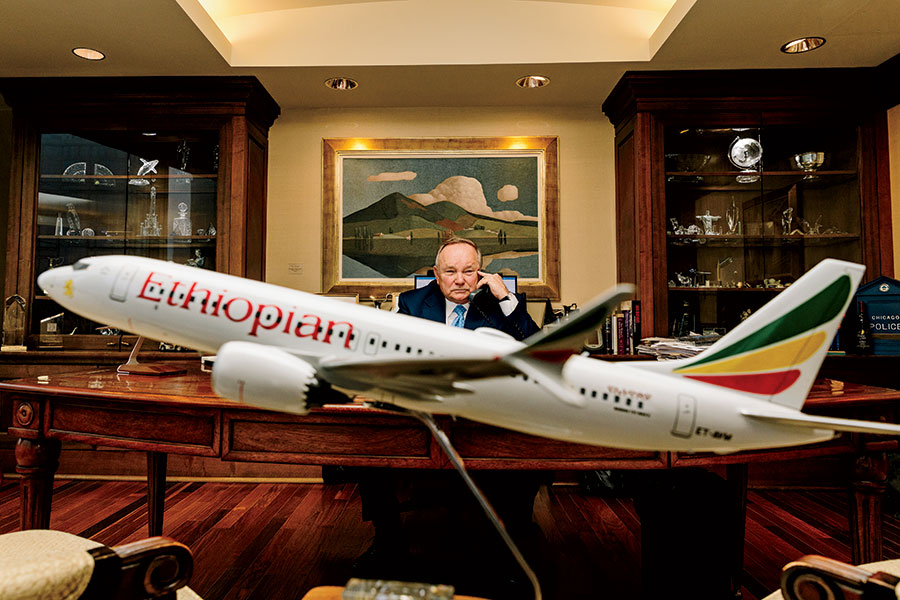The news footage of the crash’s aftermath, flickering images of loss and ruin amid the smoldering rubble, rendered the magnitude of death in the tiniest of details: charred tatters of fabric, a bottle of perfume, a singed purse, and, most heartbreaking, a torn corner of the Dr. Seuss book Oh, the Thinks You Can Think! fluttering in the breeze.
That morning, March 10, 2019, Ethiopian Airlines Flight 302, bound for Nairobi carrying 149 passengers and eight crew members, had rumbled down the runway at Addis Ababa Bole International Airport. The Boeing 737 Max 8 lumbered into the air, banked to its right, and, six minutes later, hurtled back to earth in a conflagration that sent a fist-shaped fireball thrusting into the sky over a pasture near the town of Bishoftu, Ethiopia, instantly killing all onboard.
Just a few days later, some 7,600 miles away, on the 31st floor of a Loop skyscraper, Bob Clifford’s phone was lighting up. A few of the calls were from lawyers overseas calling on behalf of victims’ next of kin who needed a referral. Others were from family members themselves. The attorneys at Clifford Law Offices don’t solicit survivors in the wake of a disaster. Ambulance chasing is an ethics violation, and anyhow, they don’t have to. Clifford has been retained by plaintiffs in every major domestic air disaster of the past 40 years — including the 1979 crash of American Airlines Flight 191 at O’Hare (still the country’s deadliest aviation accident) and the September 11, 2001, terrorist attacks (which resulted in a $1.2 billion settlement with the airlines and airport security contractors). Widely considered the top aviation lawyer in the country, he has a reputation for securing enormous settlements and jury awards for his clients.
Suffice it to say, when news of the Ethiopian Airlines accident broke, Clifford knew the calls would come.
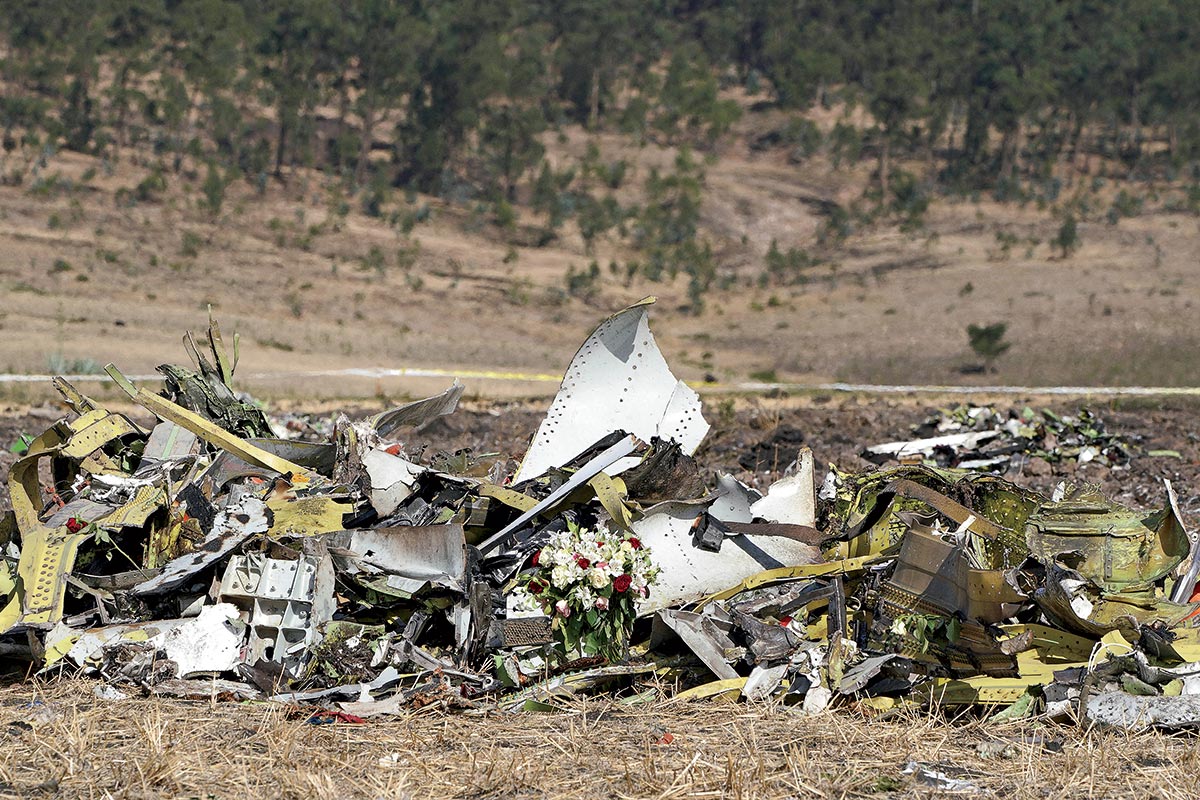
A little more than eight months after the crash, Clifford, dressed in a suitably sober gray suit and surrounded by shelves of law books, sits behind the wide expanse of his desk. Positioned on it, so that it looms both literally and symbolically between him and the person sitting across from him, is a sleek replica of an Ethiopian Airlines Boeing 737 Max 8. On display around the office are models of other planes involved in crashes Clifford has litigated: a United DC-10, an Asiana 777, an American 767.
Clifford, 68, is known both in and out of court for his cool-headed and avuncular bearing, but at the moment, he’s visibly exercised, his broad face turning pink. He is describing how, a few weeks earlier, on November 14, a hasty mass burial of the unidentified body parts and personal effects of the Ethiopian Airlines victims had been organized at the edge of the crash crater. Given just 48 hours’ notice by the airline, family members of only two victims had been able to reach the site in time. One American woman, Nadia Milleron, whose daughter was on the flight, had arranged for a U.S. embassy representative at the ceremony to narrate the burial via text message: “Now they’re laying the coffins down,” Milleron paraphrased to a Reuters reporter, “now they’re putting earth on them …”
Advertisement
Two other groups, however, were conspicuously present: officials from the airline and a handful of executives from Boeing, the Chicago-based manufacturer of the 737 Max 8 jet. Boeing’s presence in particular stoked the families’ outrage, because, if what they’d been hearing was true, their relatives did not have to die in the first place. Preliminary forensic analysis of the plane’s flight data and cockpit voice recorders has suggested that a primary cause of the crash may have been an automated system on the 737 Max 8 that, having been inadvertently triggered by a faulty sensor, forced the nose of the plane down. It appears to be the same problem that investigators were focusing on in the crash four and a half months earlier of a Lion Air 737 Max 8 in Indonesia that killed 189.
Clifford insists that the grief felt by survivors of air disasters is unique. “I’ve dealt with hundreds of families who have lost loved ones in these air crashes, and I can tell you the depth of the trauma has a different feel to it.” Part of that difference, he says, is that the deaths are played out so publicly. Each news update, each development, has the potential to retraumatize.
It’s why, he says, he was so incensed that neither Ethiopian Airlines nor Boeing gave families enough notice to get to the burial or offered to cover their travel expenses. At the time, Clifford called this “appalling and inexcusable.” He likewise tells me he was unimpressed by Boeing’s pledge, made a few months after the crash, to distribute $50 million — roughly $144,000 per passenger — to the families of the victims of both 737 Max 8 crashes. “I feel it was a publicity stunt designed to try to turn the tide of the bad media that they are receiving.” (The company did not respond to calls or emails requesting comment for this article.)
It would be naive to think that such expressions of indignation aren’t calculated. They signal to the families that Clifford shares their outrage and feed the image of the heartless corporation he’s taking on. The attorney readily acknowledges that part of the appeal of practicing high-stakes personal injury law is being able, notionally at least, to play David against a Goliath, even if the analogy doesn’t quite hold up: With more than two dozen highly paid attorneys occupying an entire floor, Clifford Law Offices is hardly a plucky upstart armed only with a slingshot. Ten of the firm’s lawyers are working solely on the Boeing case.
Clifford will need all of them. Boeing is a $76 billion company with near-bottomless legal resources and was until recently the world’s largest airplane manufacturer. (Europe’s Airbus overtook it last year after Boeing endured a dramatic drop in orders after the postcrash worldwide grounding of the 737 Max 8.) The company’s lead defense attorney in the lawsuit is former U.S. attorney Dan Webb, who was the special counsel in the Iran-Contra affair and a lead prosecutor in Operation Greylord, the massive anticorruption investigation of the Cook County judicial system undertaken by the FBI and IRS in the 1980s. After leaving public service, he became one of the nation’s premier defense attorneys, representing Bill Gates when Microsoft was sued by the U.S. government, as well as numerous politicians and corporations.
Webb was formally pitted against Clifford in September, when a U.S. district court judge, in an effort to consolidate the nearly 100 individual lawsuits that had been filed against Boeing and its suppliers after the Ethiopian Airlines crash, named Clifford the lead counsel in the case, based on the attorney’s well-established credentials in aviation law. (Clifford says he decided not to represent the families of the first 737 Max 8 crash, in Indonesia, after learning that other attorneys overseas had been actively soliciting next of kin and witnesses.) Clifford and Webb, who is arguing the case on behalf of his powerhouse Chicago firm, Winston & Strawn, taught trial advocacy together at Loyola University and have known each other for years. The Boeing case, however, marks the first time the two are going up against each other.
The litigation is still in early stages, with occasional court hearings and depositions and endless demands on the part of Clifford’s team for internal emails and documents from Boeing. It could be many months, maybe more than a year, before the case goes to trial, if it makes it that far. “I can tell you, statistically, that 97 percent of all civil cases like this will settle,” Clifford says. “But this case might be in the three percentile. I can assure you that there are families who are determined to make Boeing admit what it did was wrong, to make sure that their family members did not die in vain, and therefore, they’re going to demand accountability, and they’re going to demand change.”
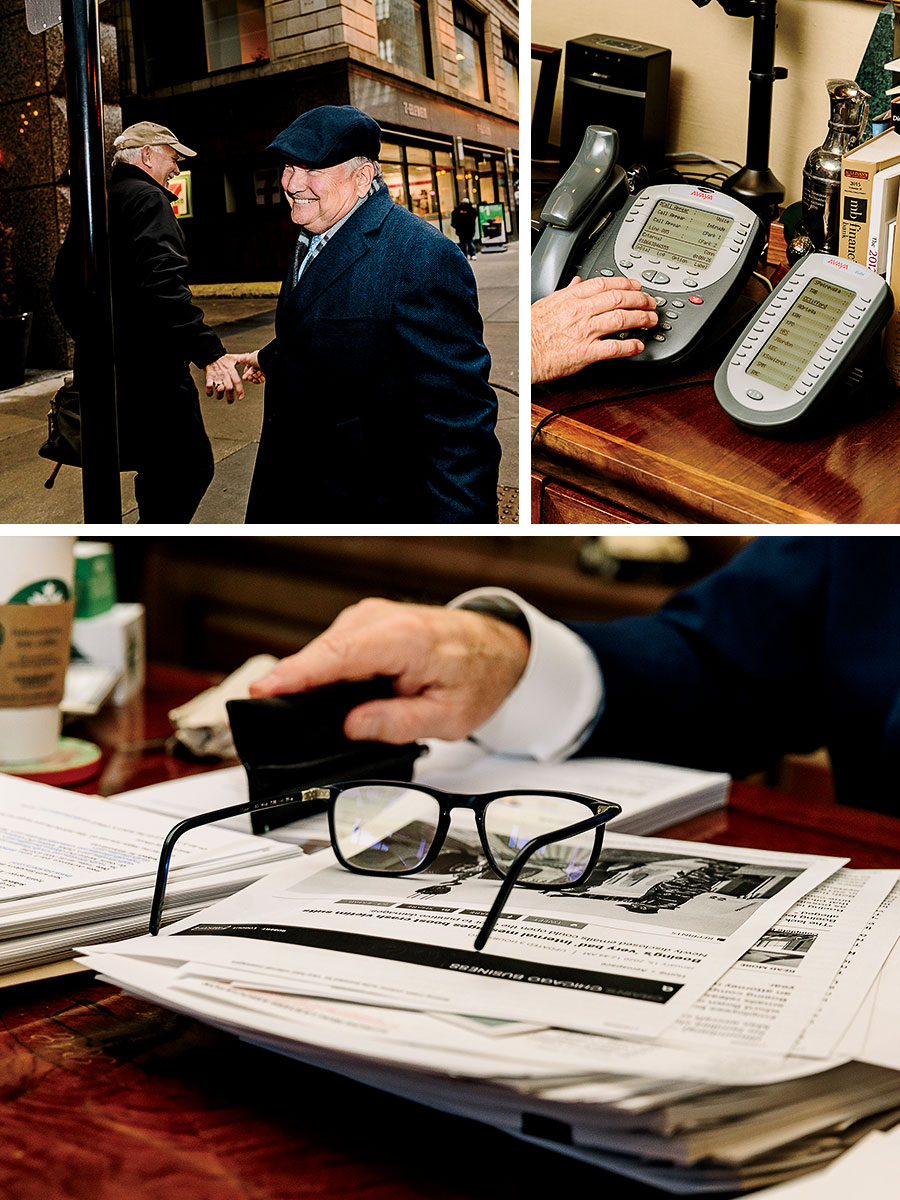
The business of litigating air disasters has motivated Clifford to go to great lengths to become an expert on how planes work — and don’t work. In October 1994, an American Eagle turboprop en route from Indianapolis to Chicago encountered severe icing conditions while in a holding pattern, causing the control surfaces on the wings to ice over. The plane crashed into a soybean field, killing all 68 people onboard. Clifford, who was hired to represent families of the victims in a lawsuit against the airline and the plane’s manufacturer, arranged, as part of his preparation, to fly with pilots who had been researching icing. “They would literally fly twin-engine turboprop planes into snow clouds with high-speed cameras attached to the wings,” Clifford recalls. “You could see the different crystal formations and the wings icing up, and the planes actually started dropping. The pilots said, ‘Yeah, we’re losing lift, but don’t worry about it. When we get down to 12,000 feet, the ice will fall off and we’ll be just fine.’ And we were, but trust me, I made sure my estate was in order before I did that.”
Couldn’t he have just studied a report? “Come on,” he says. “There’s nothing like the real experience. The descriptive ability you get by experiencing these things firsthand gives you credibility. And at its core, when a juror has two good lawyers before him or her and has to make a decision about which one to believe, it comes down to credibility. If you have it, then you will prevail. If you don’t, then your client — I don’t care what the facts of the case are — isn’t going to win.” (In the American Eagle case, Clifford never got to show off his hard-won knowledge to a jury. Just before opening statements, the defense announced it wanted to settle. It did so to the tune of $110 million.)
In 2002, when Clifford was working on the lawsuit related to the September 11 attacks, he hired a retired National Transportation Safety Board animation expert to create a video of what it was like to be inside one of the planes that flew into the twin towers. His ostensible goal was to give jurors a better understanding of the technical aspects of the flight, though the visceral effect of putting oneself aboard the doomed plane was surely not lost on Clifford.
Similarly, Clifford has hired an animator to re-create the six-minute Ethiopian Airlines flight. Clifford says it’s crucial that jurors be able to visualize as clearly as possible the chain of events leading to the fatal nosedive, because he believes Boeing will try to “make the case seem overly complicated” in order to muddy the role of what he sees as a manufacturing flaw.
It’s not just the technical aspects of a case that Clifford takes pains to visualize. Part of his burden of proof is to show loss for the families. To that end, Clifford has hired a former ABC News producer to create video profiles of each of the victims of the Ethiopian Airlines crash. “She and a team are literally flying around the world meeting with clients and witnesses to develop a documentary about [the passengers’] lives.” While jurors are typically instructed not to decide wrongful death cases based on sympathy for the victims, a series of slickly produced video biographies can still sway emotions.
In the months since the crash, Clifford has visited three continents to meet with relatives of the victims, who came from 35 countries. For the most part, the meetings have taken place in the homes and offices of family members or in the offices of local lawyers; many have required translators. In Beijing in July, he met with a young woman whose husband died in the crash, which, in a tragic coincidence, occurred on their first anniversary. “She was nearly inconsolable,” Clifford recalls. “The meeting took many hours because of the need for constant breaks for her to compose herself.” In Kenya, Clifford met with the four grandparents of an 18-month-old girl who lost both parents. They had been waiting with the baby at the airport in Nairobi to greet her mother and father when the news reached them.
“Some people have asked, ‘Can’t you just Skype these families?’ ” Clifford says. “The answer is, I could” — and in some cases, he has no other choice — “but they don’t call this personal counseling for nothing. I mean, holding people’s hands, sitting with them, visiting with them, giving them a hug … I want to have a relationship with a client. I want to be able to have that firsthand experience. If I’m going to be in front of a jury advocating for someone to articulate their loss, I want to be able to say that I’ve sat with these people and that what they’re telling you, the jury, is genuine and true. That is how you win.”
Still, for all his emphasis on handholding, Clifford doesn’t shy away from describing the calculus involved in determining monetary damages. Those figures, after all, are how personal injury firms keep score. Featured prominently on the Clifford Law Offices website is a list of the dollar amounts the firm has won for clients: the staggering $1.2 billion from the 9/11 litigation, a $180 million award in 2012 for three men burned in a grain elevator explosion, a $250 million settlement from State Farm and other codefendants for participating in a scheme to overturn a pending court judgment.
Much of Clifford’s work comes down to grim actuarial math. How much money did the deceased earn? How many family members did he or she support? Clifford offers the theoretical example of a 40-year-old man who was making $100,000 a year. The loss of earnings resulting from his death gets calculated across the additional 25 to 30 years he could have reasonably been expected to continue working. “You research who he was,” Clifford says. “Was he married? For how long? How many children did he have? What was his relationship with his extended family, his mother, his father, his siblings, his in-laws? Those are all the kinds of things you present to a jury.”
Advertisement
Less objective, but equally important, are non-economic losses, Clifford says: loss of companionship, loss of family structure. Then, gesturing at me, he adds: “Not to get too personal, but say you’re a married guy with a child. That’s a different profile than a single guy with no wife and no child.”
Clifford said it is too early to estimate what amount he will be seeking in the Boeing case, though he wryly suggests that the company itself may have helped set a benchmark. “The families were outraged to learn that Dennis Muilenburg has been awarded an $80 million discharge package upon his departure from Boeing,” Clifford says, referring to the company’s recently fired CEO. “Families are having buttons made with the number 80 on them. Possibly that’s what each family should ask a jury to consider.”
That figure may be a stretch, but one analyst for Barron’s estimates that Boeing’s exposure on the suit could reach $3 billion to $4 billion. That’s a significant hit even for a company of Boeing’s size, and it comes on top of the $5 billion the manufacturer has already set aside to compensate airlines for the costs of the grounding. Could the dual disasters ultimately lead to Boeing’s demise? “There’s no doubt that this is a public relations nightmare,” says industry expert Madhu Unnikrishnan, “but there’s no way it would cripple the company.” He points out that Boeing still has several years’ worth of orders for the 737 Max 8.
Clifford won’t go into detail about how his own earnings are calculated beyond saying he works for “a negotiated contingency fee” that changes depending on whether he wins for his clients in court or at the settlement bargaining table. In either scenario, coming up with a dollar figure for human loss “is an unpleasant reality,” he says. “But someone has to do it and someone is going to do it.” And that someone stands to make a great deal of money for themselves and their clients.
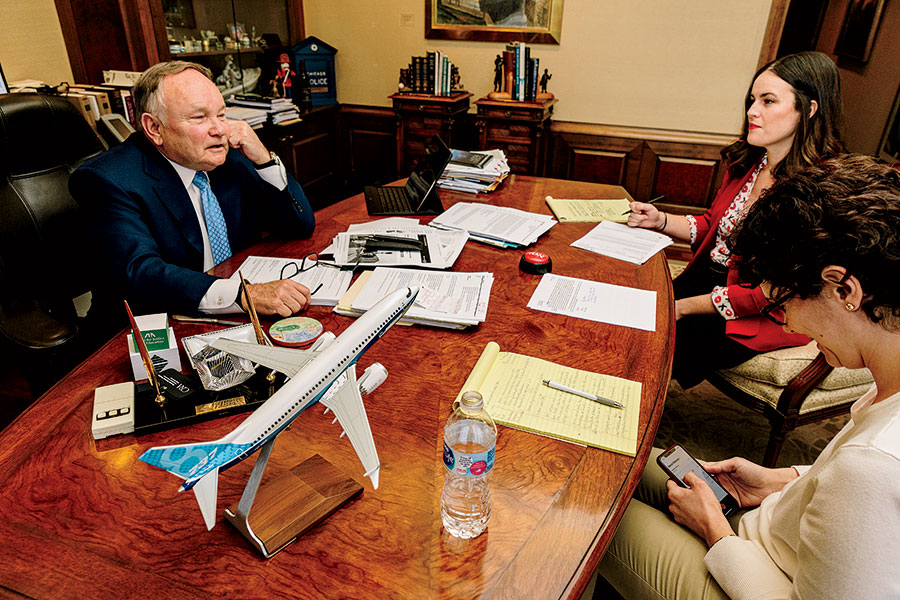
At a January hearing in the Chicago courtroom of U.S. magistrate judge M. David Weisman, Bob Clifford and Dan Webb are standing side by side at separate lecterns arguing over the production of documents by Boeing. Clifford has accused the company of “foot dragging” and, worse, neglecting to turn over relevant documents that Clifford believes could prove Boeing was aware of a flaw in the 737 Max 8 software system, known as MCAS, before the Ethiopian Airlines crash. (The automated system was meant to correct for an inherent problem in the new 737’s design: Namely, that its bigger engines could in certain conditions cause the nose to pitch up and create stall conditions. Preliminary reports from international civil aviation authorities investigating the crashes suggest that the problems on the two doomed flights arose when the MCAS, prompted by a faulty angle-of-attack indicator on the outside of the aircraft, kicked in during a normal ascent, repeatedly forcing the planes into a dive that the pilots had inadequate training to recover from.)
Clifford is trying to establish that Boeing knew the MCAS was partly to blame for the crash in Indonesia but nonetheless withheld its concerns from the Federal Aviation Administration in order to keep the plane flying and maintain a competitive edge over Airbus. That assertion, alleged in the lawsuit, is based largely on a steady stream of internal Boeing communications emerging from the ongoing congressional investigation into the crashes. Clifford, suspecting there are more documents where those came from, is arguing for a more comprehensive turnover of them from Boeing.
In Weisman’s courtroom, Clifford grips the lectern and, glasses perched at the edge of his nose, levels his gaze at the judge. “We want to know what they knew, when they knew it, and what they did about it,” he says. “But I believe we are at loggerheads.” Referring to the victims’ families, he adds, “It is going to be a disheartening message for them to hear that we’re still fighting with Boeing over documents. It’s got to be done. There’s no reason it can’t be done.”
Webb responds in a relaxed, collegial tone just slightly tinged with exasperation. “We certainly understand the families’ concerns,” he says to the judge, “but it’s frustrating to hear these complaints. … I understand the need to get [documents] quickly, but you’re talking about a large number.”
Ultimately, Clifford is denied immediate satisfaction. The hearing ends with Weisman ordering Clifford and Webb to resolve their dispute over the production of documents outside of court.
Despite the stakes — 157 deaths on the one hand and, on the other, the reputation of America’s legacy aerospace company — at no time during the hourlong hearing did either lawyer raise his voice. In fact, outside the courtroom before the start of the proceedings, Clifford and Webb came across as old friends trying to one-up each other with compliments.
Other lawyers who have gone up against Clifford attest to his almost uncanny sang-froid, which plays well with juries. By all accounts, he is neither a Johnnie Cochran, waving his hands and putting on a show, nor a Perry Mason, boring in relentlessly on witnesses until they crack. “He’s very personable,” says C. Barry Montgomery, the defense attorney in a much-publicized lawsuit filed on behalf of the noted violinist Rachel Barton Pine, who lost a leg when she was run over by a Metra train in 1995 and for whom Clifford secured a $30 million verdict. “He makes everybody his friend, especially the jurors. In my experience, most of the greats have their own style. They are who they are in and out of the courtroom. Bob is exactly that.”
Clifford is also ruthlessly wily. One of his cleverest maneuvers came in 2005, when he was representing the family of a 6-year-old boy killed when a Southwest Airlines jet overshot the runway while landing in a snowstorm at Midway Airport. The plane crashed through a barrier and skidded to a stop on Central Avenue just south of 55th Street, plowing into a car the child was riding in. Clifford got the trial moved from federal court to state court (where juries tend to be more sympathetic in personal injury cases) by successfully arguing that the Southwest crew had violated city and state laws by operating a commercial vehicle on a city street without the proper licenses and permits.
When asked if he had any similar stratagems in store for Boeing, Clifford demurred, saying it was too early in the case to know. But with a potential trial still far off, he will have ample time to seek out every advantage. One bit of homework he knows he’ll be doing is a mock trial. Though such exercises have long been part of the litigator playbook, Clifford says his preparations are more sophisticated than most, a reflection of his obsession with jury selection. “We spend incredible resources, time, money, and talent on this,” he says, “and all I can tell you is that it works. The research can be amazingly predictive.”
Age does not seem to have diminished Clifford’s appetite for exhaustive preparation. The day before my initial meeting with him, he’d just returned from Rome, where he’d met with the widow of a man who’d died in the crash. After the meeting he headed directly back to the airport and was back in Chicago the same day, with a full slate of meetings, including two court hearings, scheduled for the following morning and afternoon.
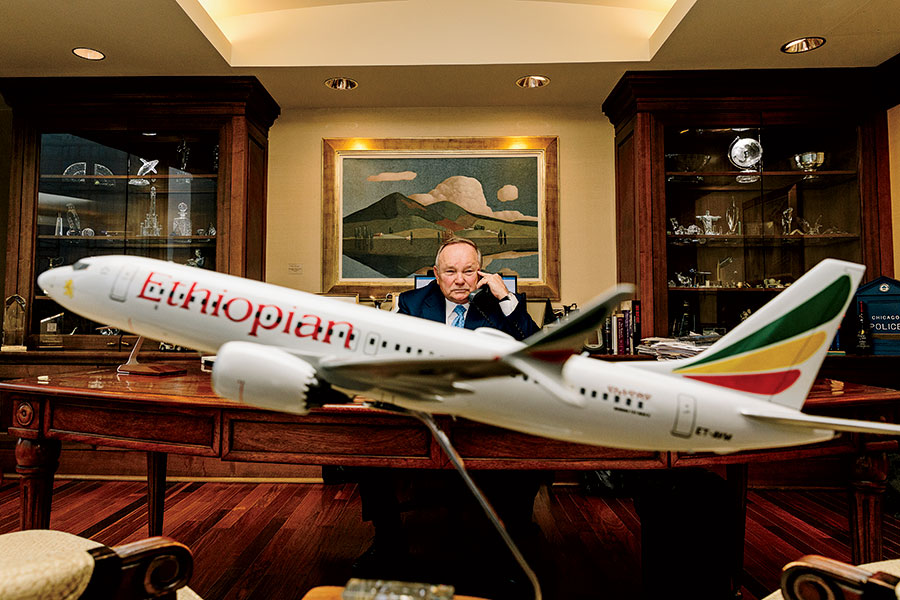
Ensconced in a leather-backed chair at the Union League Club of Chicago, the venerable downtown social organization, Clifford is typing a message on his phone. He hits send, then gazes at the device appraisingly. “It’s funny,” he says. “I became a lawyer in 1976, and in 1984, when I started my firm, I had a computer and a fax machine and I thought I was pretty special.”
A moment later, a new message flashes on the screen. He is receiving text updates on the House committee hearings. “I have three lawyers in D.C. right now,” he says, tapping out a response. “They want me to supply potential questions to Congressmen Garcia or Lipinski, both Illinois guys, to ask in the hearing.”
Advertisement
It seems that representatives from the Federal Aviation Administration are testifying that, just as Clifford is trying to prove, Boeing did not fully disclose to the agency what it knew about the likelihood of another 737 Max 8 crash in the months after the first one. In a twist, the FAA has released to the committee a document in which its staff and engineers estimated, after the first accident, that there could have been as many as 15 more 737 Max 8 crashes worldwide during the projected operating lifespan of the fleet if the planes had continued to fly without technical fixes and improved pilot training.
Clifford begins composing another message to his lawyers, this time reading aloud as he types: “What are the identities of the Boeing employees who briefed the FAA? And what kind of documents were used in the presentations?”
His lawyers on the ground end up getting answers to both questions. That known, Clifford can compel those employees to answer questions in the civil case about what they did or didn’t tell the FAA. “In some ways, Congress is ahead of us,” Clifford tells me later, evincing frustration at what he sees as Boeing’s stonewalling on documents in the civil case. Indeed, in the ensuing months, the hearings will deliver even more ammunition for Clifford’s team. In a batch of internal emails and instant messages released by Boeing in January, one of the company’s employees wrote: “This airplane is designed by clowns, who are in turn supervised by monkeys.” Another batch included an exchange in which an employee asked a colleague, “Would you put your family on a Max simulator trained aircraft? I wouldn’t.”
As additional unsettling revelations emerge, Clifford knows the families are watching. In the meantime, he will continue to build narratives around their lost loved ones. In March, he and his 10-member team will embark on an eight-country trip to meet with victims’ families. The first stop will be Ethiopia, to attend a ceremony on the first anniversary of the crash. The gathering will take place at the patch of farmland near Bishoftu where the plane went down. This time, the families will have had ample notice to attend.




